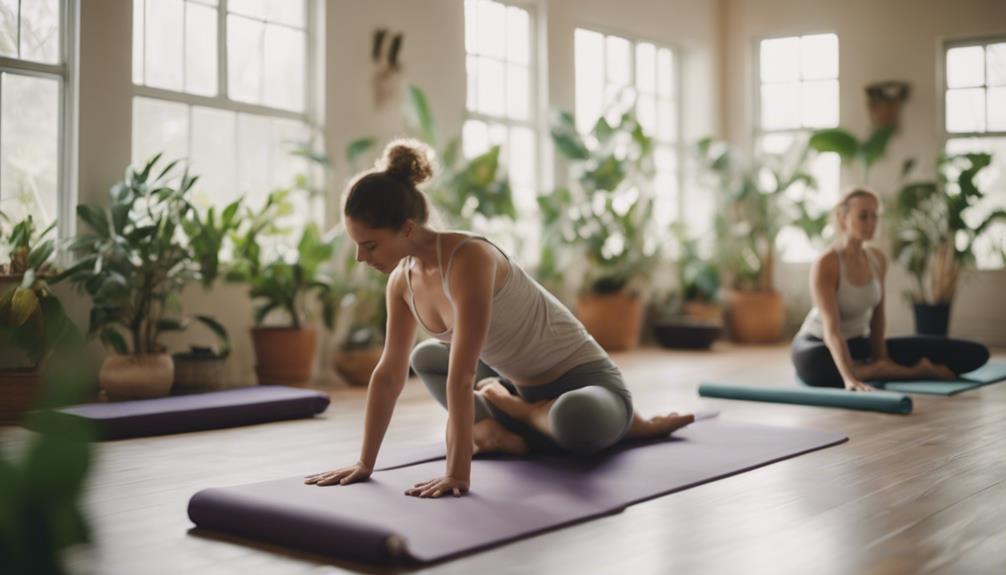The pelvic floor is a crucial but often overlooked part of the human body, comprising a group of muscles that support various organs, including the bladder, uterus, and rectum. Many people are unaware of the importance of these muscles and how their health can significantly impact overall well-being. Strengthening the pelvic floor can lead to improvements in core stability, urinary control, and sexual health. This article will explore how yoga poses can enhance pelvic floor strength and flexibility, providing practical techniques for those looking to improve their pelvic health.
Understanding the pelvic floor is essential to grasp its function and importance. This group of muscles forms a supportive hammock at the base of the pelvis and plays a vital role in maintaining the integrity of the pelvic organs. These muscles can become weakened due to various factors such as childbirth, aging, or a sedentary lifestyle, leading to issues like incontinence or pelvic pain. Conversely, a strong pelvic floor can enhance stability and posture, contributing to better performance in physical activities.
Strengthening the pelvic floor muscles offers numerous benefits beyond the prevention of incontinence. Improved pelvic floor strength can lead to increased sexual satisfaction, enhanced core strength, and better posture. Additionally, many individuals find that a strong pelvic floor contributes to emotional well-being by fostering a greater sense of body awareness. By incorporating specific yoga practices into their routine, individuals can target these muscles effectively and enjoy the comprehensive benefits that come with improved pelvic health.
Yoga is an excellent practice for enhancing pelvic floor health due to its emphasis on breath, alignment, and mindfulness. Many yoga poses target the pelvic region, helping to strengthen the muscles while also promoting relaxation and flexibility. The slow, mindful movements in yoga create a connection between the mind and body, which can be particularly beneficial for individuals experiencing pelvic pain or dysfunction. Furthermore, the breathwork in yoga helps create awareness and engage the pelvic floor, which is essential for strengthening these muscles.
Several yoga poses specifically target the pelvic floor muscles, allowing practitioners to improve their strength and flexibility. Poses such as Cat-Cow, Bridge, Child’s Pose, and Garland Pose can be incorporated into a regular practice to engage and strengthen the pelvic area. By focusing on the alignment and engagement of the pelvic floor during these poses, individuals can effectively work towards better pelvic health. Ultimately, a regular yoga practice can provide a holistic approach to strengthening the pelvic floor, benefiting both physical and mental health.
Essential Yoga Poses for Pelvic Floor Strength
Incorporating yoga poses into your routine can be an effective way to strengthen the pelvic floor. Each pose offers unique benefits and engages the pelvic muscles differently. By practicing these poses with intention, individuals can enhance their pelvic health while also gaining the physical and mental advantages that yoga provides. It is essential to approach each pose mindfully, focusing on proper alignment and breathing techniques to maximize effectiveness.
Some of the most beneficial poses for pelvic floor health include Cat-Cow, Bridge Pose, Child’s Pose, and Garland Pose. These poses not only strengthen the pelvic floor but also contribute to overall body awareness and relaxation. Establishing a consistent practice that incorporates these poses can lead to long-term improvements in pelvic floor strength and function, as well as a deeper understanding of bodily sensations and movements.
Step-by-Step Guide to Cat-Cow Pose
Cat-Cow Pose is a gentle flow between two positions that helps to warm the spine and engage the pelvic floor muscles. To begin, start on your hands and knees in a tabletop position with your wrists directly under your shoulders and knees under your hips. As you inhale, arch your back, letting your belly drop towards the floor, and lift your head and tailbone toward the sky (Cow Pose). This position encourages the engagement of the pelvic floor as you create a gentle lift.
As you exhale, round your back, tucking your chin to your chest and drawing your belly button towards your spine (Cat Pose). In this position, consciously engage your pelvic floor muscles. Repeat this flow for several rounds, coordinating your breath with each movement. This pose not only strengthens the pelvic floor but also improves spinal flexibility, making it a valuable addition to any yoga practice focused on pelvic health.
Exploring Bridge Pose for Pelvic Floor Engagement
Bridge Pose is another effective posture for engaging and strengthening the pelvic floor muscles. To practice Bridge Pose, start by lying on your back with your knees bent and your feet flat on the floor, hip-width apart. As you inhale, press through your feet and lift your hips towards the ceiling. This upward movement activates the glutes, core, and pelvic floor muscles.
As you hold the pose, focus on engaging your pelvic floor by imagining lifting the muscles as if you were trying to stop the flow of urine. Breathe deeply and hold the position for several breaths, allowing yourself to feel the strength and engagement in the pelvic area. To release, gently lower your hips back down to the mat. This pose not only strengthens the pelvic floor but also opens the hips and stretches the spine, providing a comprehensive benefit to your practice.
Utilizing Child’s Pose for Relaxation and Stretching
Child’s Pose is a restorative pose that allows for deep relaxation while offering a gentle stretch to the back and hips. To enter Child’s Pose, kneel on the mat and sit back on your heels. Then, fold forward, resting your forehead on the floor and extending your arms in front of you or alongside your body. This position encourages the relaxation of the pelvic floor muscles, making it an ideal pose to practice after engaging the pelvic area.
While in Child’s Pose, focus on your breath. Inhale deeply, allowing your belly to expand, and exhale fully, consciously relaxing your pelvic floor and letting go of any tension stored in that area. This pose provides an excellent counterbalance to more active poses and can help integrate the practice of pelvic floor engagement with deeper relaxation, promoting overall well-being.
Incorporating Garland Pose for Flexibility and Strength
Garland Pose, or Malasana, is a deep squat that opens the hips and engages the pelvic floor muscles. To practice this pose, stand with your feet about hip-width apart and slowly lower your hips down towards the ground, keeping your heels flat if possible. You can place a block under your seat for support if needed. As you squat, allow your knees to widen and press your elbows against your inner thighs.
In this position, engage your pelvic floor by imagining a gentle lift, similar to stopping the flow of urine. This pose not only strengthens the pelvic floor but also enhances flexibility in the hips and lower back. Holding Garland Pose for several breaths allows practitioners to feel the connection between the pelvic floor and the surrounding muscles, promoting greater awareness and strength in this essential area.
The Role of Breath in Pelvic Floor Exercises
Breath is a fundamental aspect of yoga that enhances the effectiveness of pelvic floor exercises. Conscious breathing techniques, such as diaphragmatic breathing, can help engage the pelvic floor muscles more effectively. During inhalation, the diaphragm descends, creating space for the pelvic floor to relax, while exhalation encourages an upward lift of the pelvic floor muscles. This connection between breath and movement is key to strengthening and balancing this area.
Incorporating breath awareness into pelvic floor exercises allows for deeper engagement and relaxation. Practicing deep, mindful breathing while performing poses helps create a sense of calm and aids in focusing on the pelvic area. By maintaining this focus on breath, individuals can enhance their awareness of the pelvic floor, leading to improved strength and coordination over time.
Tips for Practicing Yoga Safely and Effectively
To ensure a safe and effective yoga practice for pelvic floor health, it is essential to listen to your body and avoid pushing beyond your limits. Start with gentle poses and gradually increase the intensity as you become more comfortable and confident in your practice. It’s also advisable to consult with a healthcare professional or experienced yoga instructor if you have specific pelvic health concerns or conditions.
In addition, focus on proper alignment during poses to prevent strain or injury. Engaging your core muscles, maintaining a neutral spine, and being mindful of your breath can significantly enhance the quality of your practice. Consistency is key; aim to incorporate these yoga poses regularly into your routine to experience the holistic benefits of improved pelvic floor strength and health.
Incorporating yoga into your routine can be a highly effective way to strengthen the pelvic floor muscles and improve overall pelvic health. By understanding the anatomy and benefits of the pelvic floor, as well as exploring specific poses like Cat-Cow, Bridge, Child’s Pose, and Garland Pose, individuals can cultivate a mindful practice that supports their physical and emotional well-being. Remember to focus on breath and alignment, and always listen to your body as you embark on this journey toward better pelvic floor health through yoga.


